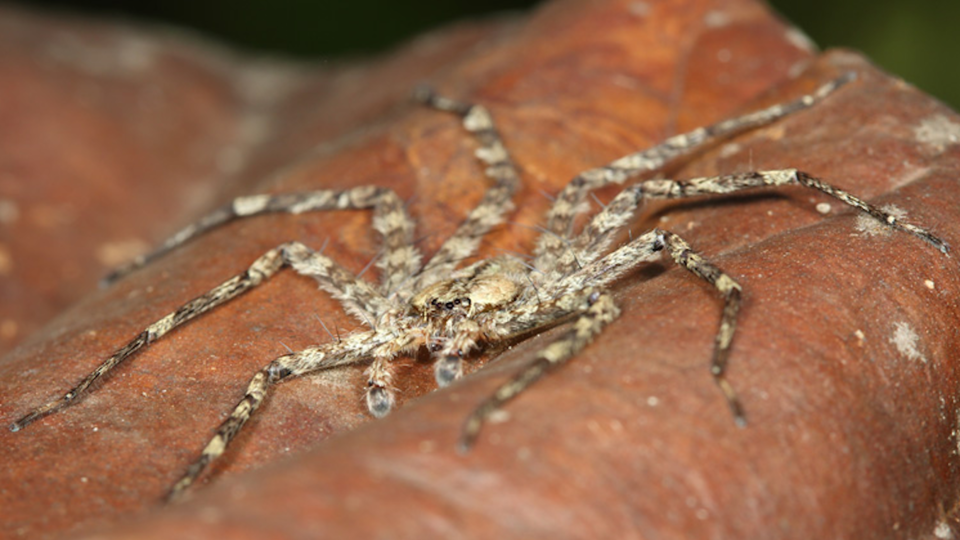Science News
Flying Spiders

About a year and a half ago, we headed over to UC Berkeley to interview Robert Dudley about the origins of flight and how humans might take flight to a whole new level. He recently published additional research he described during that interview…
To determine how flight may have arisen in insects, Dudley and his colleague Stephen Yanoviak, of the University of Louisville, came up with an unusual field test. They drop wingless arthropods out of treetops. “We’ve been at it for about five years now, throwing everything we can lay our hands on out of trees,” he told us during that interview. “Insects are complicated because we have, unlike for birds, no transitional fossil forms that demonstrate the intermediate stages of wing evolution. We go back about 300 million years ago, we have wingless hexapods… and then the winged insects turn up fully diversified in the late Paleozoic. So, the question is, what happened in between? Where did the wings come from? What were they used for? So, one way to approach the question is, to look at wingless insects today and ask: can they fly? Are they capable of controlled aerial behavior?
“And what we’ve discovered is basically almost everything that’s living in trees has some level of aerodynamic control over its trajectory. Some of these animals are really good gliders; others are parachuters, but they all seem to know that a) they are falling, and b) they don’t want to land on their head. And they also have some degree of directional control.”
Take nocturnal hunting spiders from the genus Selenops. Dudley and Yanoviak have discovered that when dropped, these arachnids are able to steer while falling, much like a wingsuit flyer, in order to return to the tree from which they fell.
The spiders are about two inches in diameter, flexible and “wafer thin,” according to Dudley. They maneuver while airborne by spreading their legs wide in order to use lift and drag to steer themselves toward the tree trunk when they fall. If they fall upside down, they’re able to right themselves in midair. The scientists occasionally saw spiders bounce off the trunk, recover, and maneuver back to the trunk a second time for a successful landing.
And Selenops may be the only spider with these almost-flying capabilities. While Dudley and Yanoviak have determined that ants, bristletails, and some insect larvae can execute such aerial maneuvers, other arachnids—scorpions, pseudoscorpions, whip scorpions and spiders—merely plummeted to Earth when dropped. (Ouch!)
Dudley and Yanoviak published the results of their gliding spider dropping, er, study, yesterday in the journal Royal Society Interface.
Perhaps, as Dudley believes, this type of controlled gliding is the predecessor to flying. After all, an animal that had success using arms and legs to gain lift while in freefall would also benefit from spare appendages, which could have led to the evolution of wings in a population of insects.
Beyond biology, these bug-dropping tests might inform technology! By studying these unusual types of animal behavior, Dudley says, biologists may be able to supply engineers with novel ideas for robots that can right themselves when falling.
Image: Stephen Yanoviak